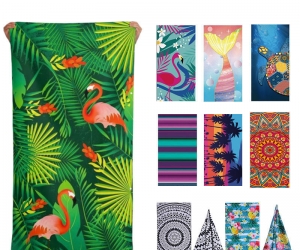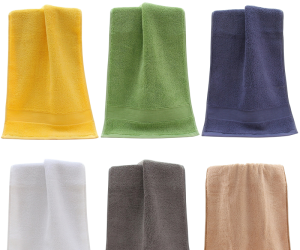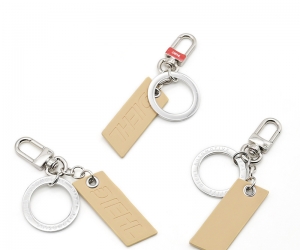What are the commonly used materials for lanyards?
The conventional materials of the lanyard are: nylon/Teduron/PP polypropylene/acrylic/cotton/polyester/golden onion/spandex/light silk/rayon, etc. Let's talk about the raw material characteristics of the following lanyard materials in detail:
1: PP yarn (also known as polypropylene yarn) = POLYPROPYLENE yarn
Composition: PP rubber particles + PE rubber particles + masterbatch (raw materials are mainly from Taiwan, South Korea, Malaysia and South Africa) *From coarse to fine: 1200D, 1000D, 900D, 600D, 300D *The top three commonly used: 900D, 600D and 300D *The unit price of colored yarn is higher than that of black yarn P7390 uses 900D yarn
2: Nylon yarn = NYLON yarn
Raw materials for producing nylon belts* from coarse to fine: 1260D, 840D, 630D, 420D, 390D, 210D
Commonly used 840D N7562 yarn is 390D.
3: Special yarn (also known as polyester yarn) = POLYESTER yarn
The main raw materials for producing elastic belts: (Teduo 300D twist is mostly used for high-speed elastics, and Tedo 150D raw yarns are mostly used for knitted elastics) Small yarns and wefts of jacquard belts *From thick to thin: 1200D, 900D, 600D, 300D, 150D * Properties: twisted, untwisted (AO original yarn), *do not need to be twisted when special multi-yarn is used for weft yarn, *twisted yarn: not easy to fluff when used as lanyard, *when used for small yarn, it is necessary to add twist Twisted yarn will not fluff.
*Black smoke will be emitted when burning
4: Stretch nylon (also known as nylon yarn) * divided into 70D single-strand and 70D double-strand, commonly used 70D double-strand * commonly used in the production of elastic belts.
5: Acrylic = ACRYLIC
From coarse to fine: 10 sticks 3/10, 2/10, 1/10
20 sticks 3/20, 2/20, 1/20
30 sticks 2/30
10 commonly used
6: pure cotton = COTTON
Made of plant cotton, it feels soft and fragile
From coarse to fine: 10 sticks 4/10, 3/10, 2/10, 1/10
20 sticks 3/20, 2/20, 1/20
30 sticks 2/30
Burning with fire will turn to ashes.
7: SP line (ie needle thread) = SPUN POLYESTER
From coarse to fine: 3/20, 2/20
8: Rayon *Part of cotton and other fibers are combined
9: Plastic thread (fishing thread) *Used for health care products, weft yarn, small yarn to produce curtain tape
From coarse to fine: 0.5MM, 0.4MM, 0.3MM, 0.22MM, 0.18MM, 0.15MM, 0.12MM, 0.1MM, the finer the more expensive
Standing stock: transparent
10. Rubber band
for elastic band, elastic
Divided into bare bars, wrapped bars (the outer surface of the bare bars is wrapped with two or two special multi-filament yarns), and stretched elastics (used for medical supplies, harmless to the body)
From thick to thin: 23#, 32#, 37#, 42#, 52#, 100#, the thinnest light bar is 52#, and the wrap bar is the thinnest 100#
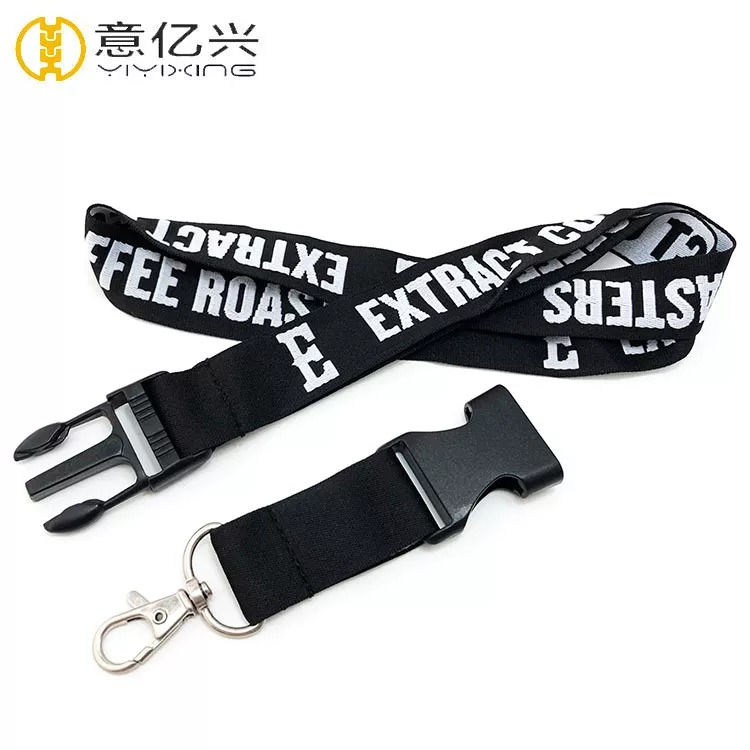
11: Carpet Yarn
Mostly used for wrapping
Long fiber: Nylon/Tetlon/PP are distinguished by Danny number, and many spun yarns are disassembled to form a whole yarn
Staple fiber: cotton/acrylic/SP lanyard is distinguished by the number of strands, and several yarns are obviously twisted together after dismantling
Denny: (The weight of a yarn within 9000 meters is how many grams is the Denny) The larger the Denny number, the thicker the yarn, and vice versa
PP: 300D/600D/900D/1000D/1200D…
Nylon: 21D/390D/420D/630D/840D/1260D…
Extra: 150D/300D/600D/900D/1200D
Tedoron: 1000D
Pure cotton: 3/10, 2/10, 2/20 (10 is thicker than 20, 3/10 is 3 strands of 10 yarn twisted...)
Acrylic as above
According to the material, it is generally divided into Tedlon/nylon/PP/acrylic/cotton lanyard.
1) Tedoron Lanyard
Uses: Generally used for safety requirements, such as car seat belts, skydiving belts Texture: softness is the same as nylon Physical properties: good softness Strength: for yarns The highest dyeability: post dyeing (water dyeing), high temperature dyeing about 140 degrees Destruction of coloring: not attacked by sunlight and hydrochloric acid Characteristics: high abrasion resistance and tensile force.
2) Nylon Lanyard
Uses: Generally used for safety requirements, such as general safety belts Texture: Softness is the same as Tedolong yarn Physical properties: Good softness
Strength: lower than T-DOLON yarn, higher than PP yarn, T-D-D yarn, acrylic yarn, pure cotton yarn Dyeing: Post dyeing (water dyeing), dyeing at room temperature about 80-100 degrees Destructive: not eroded by sunlight, but Will be attacked by hydrochloric acid characteristics: high wear resistance and tensile force.
3) PP lanyard
Uses: Generally used without safety requirements, and the maximum amount of handbags is used. Texture: slightly harder than nylon yarn Physical properties: softer than nylon yarn Strength: worse than nylon yarn Dyeing: pre-dyeing (added before molding) Pigment destructive: Corrosive by sunlight and natural decomposition characteristics: self-corrosion, environmentally friendly cutting.
4) Acrylic Lanyard
Uses: generally used for handbags, belts, sports equipment, garments, etc. Texture: softness Physical properties: chemical fiber, good softness Strength: poorer than nylon yarn, Tedlon yarn, PP yarn Dyes, dyeing at room temperature about 100 degrees Destructive: not attacked by sunlight and acid Characteristics: water-absorbing texture is similar to cotton yarn.
5) Pure cotton lanyard
Uses: Generally used for handbags, sports equipment, medical supplies that do not involve safety requirements. Texture: soft Physical properties: natural cotton, good softness Strength: poorer than nylon yarn, Tedlon yarn, PP yarn, acrylic yarn Dyeing property: after Dyeing (water dyeing), water-based dyes, dyeing at room temperature about 80-100 degrees Destructive: self-corrosion, environmental protection Material characteristics: good water absorption, natural raw materials, no environmental problems.
-
 Such a beautiful keychain makes people love and hate!
Such a beautiful keychain makes people love and hate!If you are a designer, then lines like "Tune a little bit here", "Help me change t...
Do you like ?0
Read more -
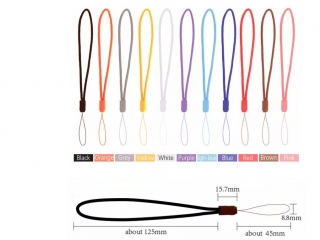 Easy to carry Water Bottle Lanyards buying
Easy to carry Water Bottle Lanyards buying -
 Advantages of using personalized printed Silicone Wristbands
Advantages of using personalized printed Silicone Wristbands -
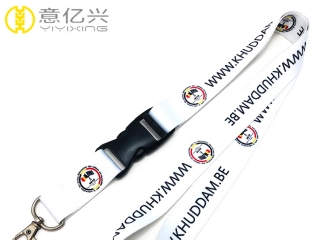 The difference between nylon lanyard vs polyester lanyard - Yiyixing
The difference between nylon lanyard vs polyester lanyard - YiyixingWhat is Polyester Made Lanyards?
When it comes to <...
Do you like ?0
Read more -
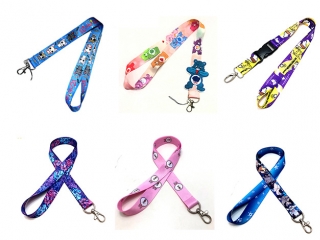 Does Wear Cute lanyard can keep in a good mood?
Does Wear Cute lanyard can keep in a good mood?With the growth of age, girls are more and more inclined to adorabl...
Do you like ?0
Read more -
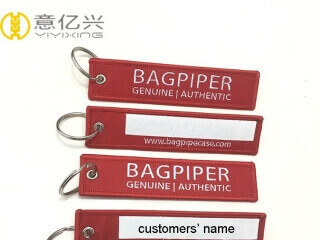 Why not choosing custom flight tags as a gift?
Why not choosing custom flight tags as a gift?Fabric key tag, made by embroidery or woven is one of our new appli...
Do you like ?0
Read more


